Camera traps have been a key part of the conservation toolkit for decades. Remotely triggered video or still cameras allow researchers and managers to monitor cryptic species, survey populations, and support enforcement responses by documenting illegal activities. Increasingly, machine learning is being implemented to automate the processing of data generated by camera traps.
A recent study published showed that, despite being well-established and widely used tools in conservation, progress in the development of camera traps has plateaued since the emergence of the modern model in the mid-2000s, leaving users struggling with many of the same issues they faced a decade ago. That manufacturer ratings have not improved over time, despite technological advancements, demonstrates the need for a new generation of innovative conservation camera traps. Join this group and explore existing efforts, established needs, and what next-generation camera traps might look like - including the integration of AI for data processing through initiatives like Wildlife Insights and Wild Me.
Group Highlights:
Our past Tech Tutors seasons featured multiple episodes for experienced and new camera trappers. How Do I Repair My Camera Traps? featured WILDLABS members Laure Joanny, Alistair Stewart, and Rob Appleby and featured many troubleshooting and DIY resources for common issues.
For camera trap users looking to incorporate machine learning into the data analysis process, Sara Beery's How do I get started using machine learning for my camera traps? is an incredible resource discussing the user-friendly tool MegaDetector.
And for those who are new to camera trapping, Marcella Kelly's How do I choose the right camera trap(s) based on interests, goals, and species? will help you make important decisions based on factors like species, environment, power, durability, and more.
Finally, for an in-depth conversation on camera trap hardware and software, check out the Camera Traps Virtual Meetup featuring Sara Beery, Roland Kays, and Sam Seccombe.
And while you're here, be sure to stop by the camera trap community's collaborative troubleshooting data bank, where we're compiling common problems with the goal of creating a consistent place to exchange tips and tricks!
Header photo: ACEAA-Conservacion Amazonica
Our friends at the Conservation Leadership Programme are pleased to announce the winners of their 2020 CLP Team Award! Today, they'd like to feature some of the inspiring teams and projects that have earned this honor,...
8 June 2020
Conservation technology largely consists of two categories: tools to monitor and study wildlife and their habitats, and solutions to mitigate or prevent negative human impacts. The fight against poaching in particular...
4 June 2020
Funding
The 2020 Hackaday Prize competition has begun! This year, Conservation X Labs has partnered with the Hackaday Prizes as one of four nonprofits seeking tech-based solutions to urgent challenges. Conservation X Labs'...
26 May 2020
In this three-part WILDLABS feature article, we'll take a look at the various technologies used to fight the greatest threat to endangered condors, explore the innovations that may change the way we study and understand...
5 May 2020
Funding
Want to compete in the iWildCam 2020 competition identifying species in camera trap images to support biodiversity monitoring efforts and automatic species classification model improvements? Because the Workshop on Fine...
4 May 2020
Trapped inside during the COVID-19 quarantine and looking to engage with conservation science without leaving your desk? Citizen science projects like those on Zooniverse offer a great opportunity to impact scientific...
18 March 2020
Article
Aditya Gangadharan's latest case study looks at how sensor technology can provide solutions for human-wildlife conflict instances along the Indo-Bhutan border. This project, which aimed to get the local community...
11 March 2020
Using technology in the field allows us to innovate new solutions to very old problems like human-wildlife conflict, but are you giving enough consideration to how your high-tech tools fit into long-term plans? Before...
9 March 2020
2020 marked our fifth year holding our annual #Tech4Wildlife Photo Challenge, and our community made it a milestone to remember. Conservationists took to Twitter last week to share their best high-tech snapshots from...
4 March 2020
The 2020 Tusk Awards are now accepting nominations of outstanding individuals who have made a significant impact on conservation in Africa. These nominations offer the rare and exciting opportunity to honor your peers...
3 March 2020
The Arribada Initiative is back with an update on their thermal elephant alert system which aims to reduce human-elephant conflict (HEC). The success of their system rests on the ability of a camera to accurately...
17 February 2020
Fueled by Artificial Intelligence, Wildlife Insights provides access to over 4.5 million camera trap records.
17 December 2019
May 2024
event
October 2024
November 2023
event
35 Products
Recently updated products
Cuddelink Camera Issue?
12 June 2023 4:33pm
Camera-trapping provides new insights on scent marking in the large-antlered muntjac
12 June 2023 5:30am
New insights into the behavior of the large-antlered muntjac, a critically endangered deer species in Southeast Asia, are revealed through camera-trapping, shedding light on scent marking as a communication method used by these secretive ungulates and its potential role in territoriality and mate assessment.
Wildlife Monitoring Engineer
8 June 2023 4:54pm
Camera Traps to monitor direct seeding reforestation
5 June 2023 10:17am
Looking for AI volunteer positions
24 May 2023 5:41am
Scientists step up hunt for ‘Asian unicorn’, one of world’s rarest animals
18 May 2023 6:25pm
The saola, also known as the 'Asian unicorn,' remains one of the world's most elusive and rare animals. Conservation organizations, such as the Saola Working Group, operating in Laos and Vietnam, are conducting extensive searches using camera traps and exploring new methods like training dogs to detect saola signs and developing rapid DNA field test kits in order to save this remarkable creature from extinction.
Camera trap pics of rare species in Vietnam raise conservation hopes
18 May 2023 6:17pm
Camera traps installed in Vietnam's Phong Dien Nature Reserve have yielded remarkable images of rare and endangered species, igniting optimism for biodiversity conservation in the region. Among the captivating photographs are sightings of muntjac deer, the crested argus, Annamite striped rabbit, and Owston's palm civet. The camera trap images serve as a testament to the presence of these elusive creatures, fueling hope for their conservation.
Mbaza AI recognized by UNESCO & new team member
17 May 2023 8:49pm
What are the waterfowls?
14 May 2023 3:26pm
Collar Tracking vs. Camera Traps for Monitoring Mexican Wolves
5 May 2023 9:08pm
This article compares and contrasts the success of their wolf monitoring efforts with both collars and camera traps. The camera traps were intended to help researchers identify individual wolves within the population, but they experienced difficulties identifying both uncollared wolves and those with marked collars.
Camera Trap Data Management Survey
3 May 2023 10:28pm
AI Animal Identification Models
30 March 2023 5:01am
20 April 2023 12:53am
Thanks Dan, that is very helpful. No zebras here but I did see four deer wandering through the streets this morning. Quite wild at times here!
I am totally willing to try an image classifier if it reports multiple objects it identifies in a scene. I will give this a go.
I think 1 fps would be quite acceptable actually, and in some perspective actually advantageous in reducing how much data is getting logged.
I tried upgrading my existing object detector model to YOLOv8 following the links you sent, but I don't think it is possible to upgrade the model on the framework I'm using (ml5js) so I think I will have to try a different framework.
Thank you.
25 April 2023 2:08pm
Hi David
It appears that you have been looking for existing models, however, most existing models are trained on either COCO or some other very generic dataset. So, if you want to identify just animals, you may be better off training your own model. It seems no one in this thread mentioned yet that it is possible to do transfer learning on existing models, which keeps most of the "visual part" of the model as is, but just changes the classification part so it can identify other things. This way you can take an existing model trained on COCO and in a fraction of the time it takes to train a full model, just retrain that for your animals.
Also have a look at your requirements for the inferencing stage. Some models take long in training but are superfast in inference and others are slow in both cases but very accurate, etc. If you want semi-realtime inferencing, you are probably looking at single shot detectors (SSD), and not RCNNs.
26 April 2023 7:34pm
Thanks Bas! I'll look into SSD vs RCNNs, I'd never heard of an SSD.
Video: Virginia Tech tracking bobcats to preserve wildlife
26 April 2023 2:45pm
Quick feature of Virgina Tech project using camera traps and biologgers to track bobcats, collecting data to inform human-wildlife coexistance efforts
Congo Basin activity?
30 March 2023 9:14pm
25 April 2023 5:08pm
greetings!
i sent you a PM regarding this, feel free to contact me however is most convenient for you -
regards,
chris
Indigenous groups working with camera traps in Latin America
19 April 2023 10:53pm
21 April 2023 1:27pm
Hello,
Happy to put you in contact with some of my grantees working in Mexico who have extensive experience in capacity building for indigenous communities focused in species monitoring, including: Eco-Creando Soluciones, AC, Bosque Antiguo, AC, Bioconciencia, AC. Let me know.
Best,
Amanda
21 April 2023 2:23pm
I've heard that Alianza Ceibo and Amazon Frontlines use camera traps in the Amazonian regions of Ecuador, Colombia, and Peru to monitor poaching and land encroachment. You can reach out to them directly or I can put you in touch with one of their program managers if you'd like (I only have her # and don't want to post her personal info directly on here though).
21 April 2023 8:22pm
Great, thank you both! I'll follow up for introductions/ contact info
Catch up with The Variety Hour: April 2023
21 April 2023 10:42am
Camera traps, AI, and Ecology
14 April 2023 10:08am
7 June 2023 9:42am
1 August 2023 10:46am
1 September 2023 8:06am
The 59th Annual Meeting of Illinois Chapter of The Wildlife Society
12 April 2023 5:24am
Analyze difference in time events in camera trap data
14 March 2023 9:50pm
24 March 2023 6:20pm
Adrían - You might try looking at the methods for analyzing temporal interactions described in these two papers. These will hopefully provide you a starting point into the literature. Best wishes - Russ
Rahel Sollmann. 2018. A gentle introduction to camera-trap data analysis. African Journal of Ecology. https://doi.org/10.1111/aje.12557
Justin P Suraci, et al. 2022. Beyond spatial overlap: harnessing new technologies to resolve the complexities of predator–prey interactions. Oikos. https://doi.org/10.1111/oik.09004
6 April 2023 3:49pm
Hi Adrián,
Are you looking at ways to categorize visits as independent? or the methodology and theory of independence?
If you simply want a way to categorize visits, software managing camera trap images sometimes have this option. For example, Camelot can assess independence based on a time threshold.
6 April 2023 6:24pm
Hi Adrián,
Bracis et al. {recurse} package in R allow those time between visits comparisons. I had problems running the package with my data, though.
Recommendations needed: software for collating camera trap images
25 October 2020 8:54pm
28 March 2023 9:32pm
Hey Sami! Not sure what their needs are at WildlifeInsights. But would love to contribute in any capacity. I'm a software developer with a Masters in Zoology and experience Wildlife research. I have worked on several project integrating with TensorFlow and other ML models-including ChatGPT. Any chance they are looking for folks to staff their venture? Cheers!
-Dévi
6 April 2023 12:12pm
Hi @StephODonnell , I don't know if it's just me, but the two bulleted links you posted above are broken?
6 April 2023 12:34pm
Ah yes, these must have broken when we moved over to our new site. They should work now - thanks for flagging!
Who's going to ESA in Portland this year?
31 March 2023 9:27am
4 April 2023 9:58am
That sounds great. I think you should encourage people to bring a bit of tech with them, can be a good conversation starter/ice-breaker
4 April 2023 4:04pm
Good idea! I've got a ransom assortment of different acoustic recorders I can bring along
5 April 2023 11:58pm
Indeed, I'll be there too! I like to meet new conservation friends with morning runs, so I will likely organize a couple of runs, maybe one right near the conference, and one somewhere in a nearby park where we can look for wildlife. The latter would probably be at an obscenely early hour, so we can drive somewhere, ideally see elk (there are elk within 25 minutes of Portland!), and still get back in time for the morning sessions.
Computer Vision Competitions on Natural-World datasets
5 April 2023 4:26pm
AI for European Wildlife Challenge
29 March 2023 10:39am
17 April 2023 6:06pm
Global shortage of Raspberry Pis - What are the alternatives
3 November 2022 10:27am
28 March 2023 9:37pm
Have you considered Arduinos?
29 March 2023 10:13am
UPDATE: The Banana Pi didnt work out for us as it was not possible to track back all the components and ensure that they were responsibly sourced. The Rock board did work for us and we were able to port our system onto this. We will be rolling out units using this over the summer. It also looks like Raspberry Pis are coming back on line and we were able to secure a bulk order for deliver mid-summer
29 March 2023 10:14am
Yes, but for our needs that are not powerful enough
Exploring storage options for mass data collection
22 March 2023 3:20am
22 March 2023 7:36pm
Hi Adam!
I mostly live within the ecoacoustics space so I'll just speak on the hydrophone part of your request; Arbimon is a free web/cloud-based platform with unlimited storage for audio files. We've got an uploader app as well for mass-uploading lots of files. There's also a bunch of spectrogram visualization/annotation tools and analysis workflows available. It's AWS running under the hood.
I have some experience working directly with AWS & Microsoft Azure, and I've found personally that AWS was more user-friendly and intuitive for the (fairly simplistic) kinds of tasks I've done.
27 March 2023 5:23am
Camera trap. Snow Leopard reserve Kyrgyzstan. Solar+4G+Video. System upgrade.
15 December 2022 3:32pm
16 March 2023 6:05am
Hi Kumar
I wanted to contact you about the possibility of collaborating in the project I mentioned before. Where is good to contact you? [email protected] ? You can also email me from our website www.baiboosun.com
Looking forward from hearing from you
Luciano Foglia
24 March 2023 9:14pm
Look into evorta.
It is an Australian company that is doing exactly this.
You can.
- Have an offline camera that can be trained to ID specific species,
- send you just the photos of those species via satellite
- Or if you can get 4g send you all the photos to their online database.
- They also have an online database that allows you to analyse the data in real time.
- They can also hack normal camera traps so they can send photos back to the main unit to process and send valid photos. That way you only need one ‘smart’ camera. All the rest can be your exsisting cameras. You just need to use your sd card slot.
Here is an article here
Best to contact him through email.
I’ll send it to you privately
25 March 2023 1:11pm
The eVorta website is still VERY empty but will be worth keeping an eye out for for sure. At first, from the notes above, I thought that this was Edge AI but in the article linked to it seems that the ML and animal ID happens after 4G download of the images.
I will just throw a link to relatively recent paper where a standard cameratrap was "hacked" and Edge AI ID could send alerts via Iridium: Real-time alerts from AI-enabled camera traps using the Iridium satellite network and here is more from some of the authors of that paper:
African Field School on Design and Analyses of Camera Trap Studies – 2023
24 March 2023 1:28pm


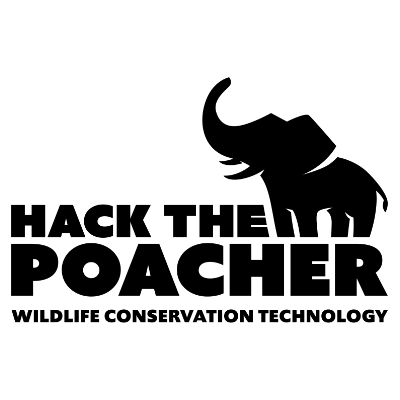

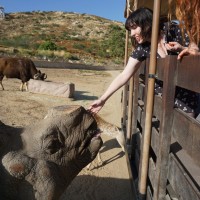








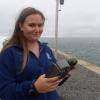


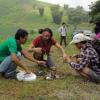


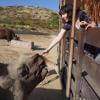



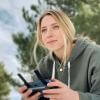







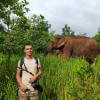



24 May 2023 3:45pm
Hi Donya! You might check out the Conservation Tech Directory to see what projects/organizations/tools best align with your interests and skills.